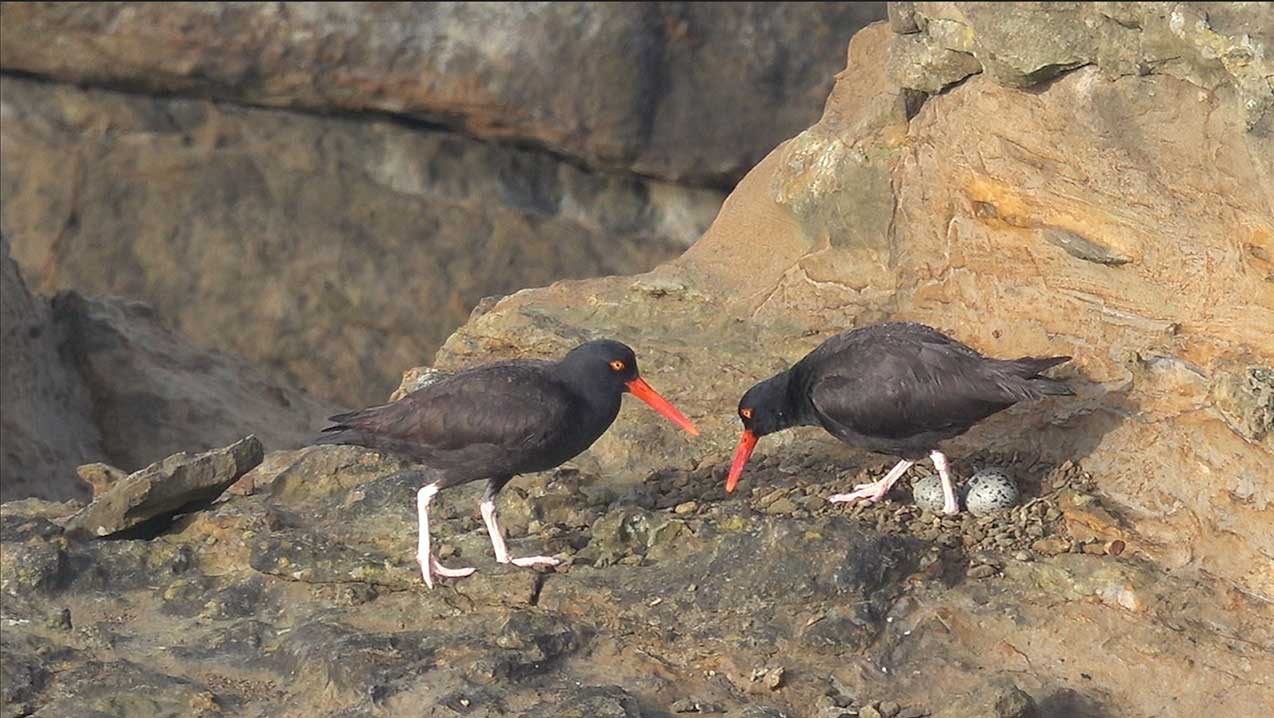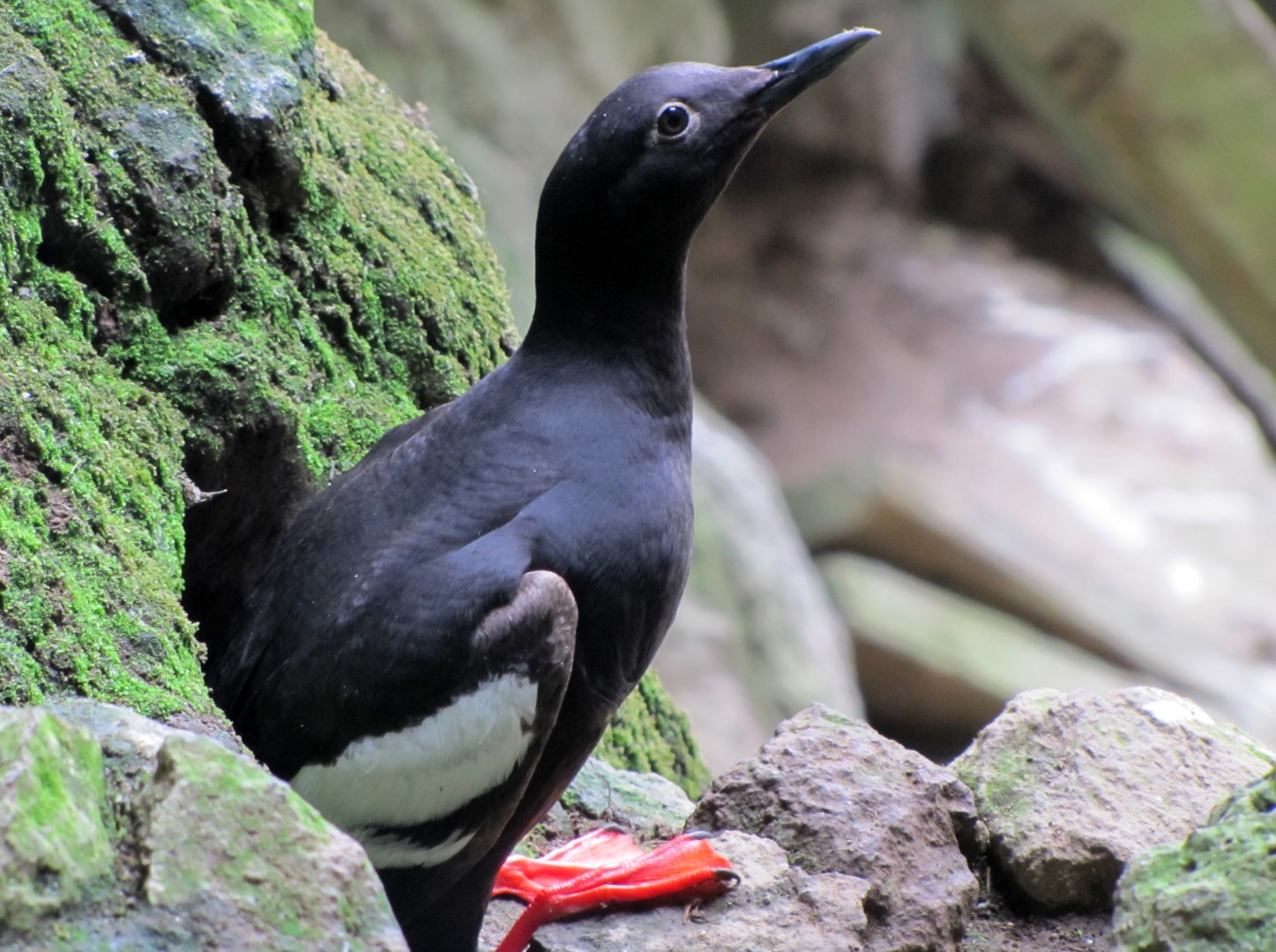Did you know that half of the nesting seabirds on the US West Coast nest along the Oregon Coast? In fact, the Otter Rock Marine Reserve provides nesting habitat to over 500 seabirds and foraging grounds for many more. These birds are drawn by the abundance of small schooling fish to eat in and around the reserve. The offshore islands, steep cliff sides, and headlands of Cape Foulweather all provide excellent nesting habitat. Sometimes nesting birds are hidden in plain sight right next to the state park trails.
The first shorebird you may see along the Devil’s Punchbowl is the black oystercatcher. These charismatic birds are easy to spot with their bright orange bills and long pink legs. You will likely hear them before you see them as they are very territorial and often take flight to chase off other birds with a loud whistling call. You may find them poking around the rocky shoreline looking for mussels to pry open and eat. During the summer, you may even catch one of our local nesting pairs diligently incubating eggs on top of the cliffs near the Punchbowl. We monitor this pair every year to determine if they successfully raise chicks. These unique birds often have low reproductive success due to their vulnerable nesting sites. Their population along the Oregon coast has remained relatively small but stable in recent years.

(Black oystercatcher nest, Photo credit: Marilyne Coblentz)
Another common nesting resident is the charming little black seabird with bright red-orange feet called a pigeon guillemot. They nest in cliffside crevices and can often be seen floating and diving for small fish in the water close to shore. You may hear their pleasant chattering calls carrying over the cliffs from the Punchbowl.

(Pigeon guillemot, Photo credit: Paul Engelmeyer)
With their long sleek necks and large black bodies, pelagic and Brandt’s cormorants can be seen patiently sitting on their woven nests along the steep cliff sides or diving in the water. Western gulls also nest along amongst other birds and can help to defend against larger predators. However, you may also see pestering gulls attempting to steal another bird’s fresh catch or unguarded eggs. In the summer, bald eagles wander the headland and these outer rocks, flushing colonies in the hopes of grabbing a chick.
From April to November, if you look through a spotting scope at the largest of the local offshore islands known as Gull Rock, you’re likely to spot lots of bird activity. A large flock of brown pelicans may soar low to the ocean, skimming the waves, or plunging into the water to catch fish.
An experienced birder will identify a variety of shorebirds along the beaches of the Otter Rock Marine Reserve, such as whimbrels, sandpipers, and plovers.

(Brown pelican, Photo credit: Dennis White)
Seabirds are useful indicators of ocean health. By monitoring the local populations of these feathered summer residents and their foraging success, we can learn about the stability of the ecosystem.
Migratory birds are protected by the Migratory Bird Treaty Act and Endangered Species Act. We can help all seabirds thrive by being good coastal stewards and minimizing disturbances to nesting pairs and baby birds. Visitors should obey signs and give birds plenty of space. Don’t go beyond fences or fly drones over the nearshore of the Marine Reserve. Keep dogs on leash or within voice command to prevent harassment of birds who may leave their nests and not return. We’re lucky to be able to view the fascinating behaviors of the birds of Otter Rock from a safe distance without causing disturbance.